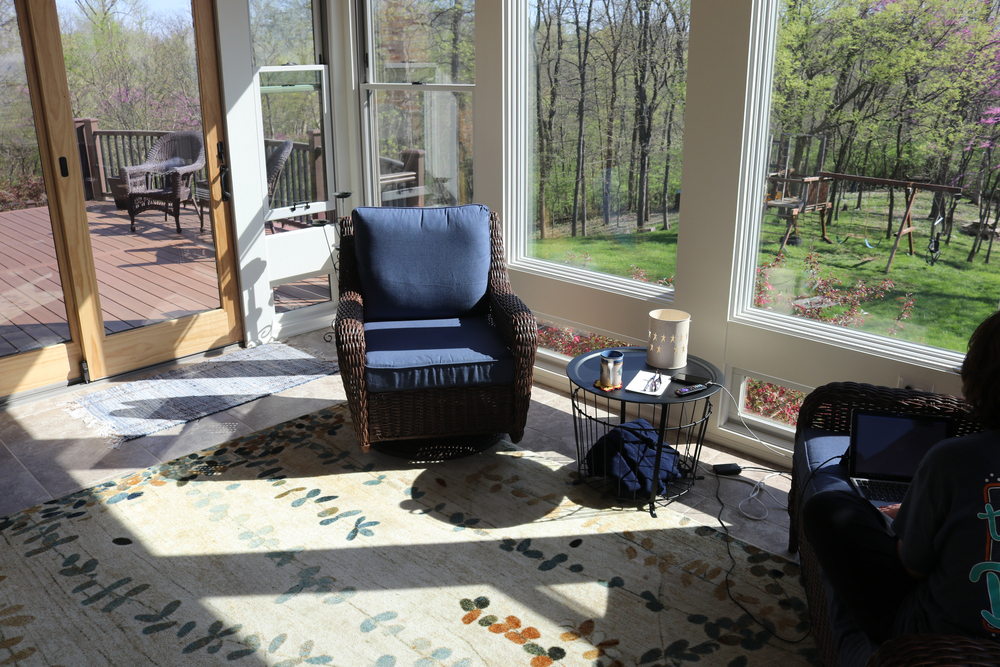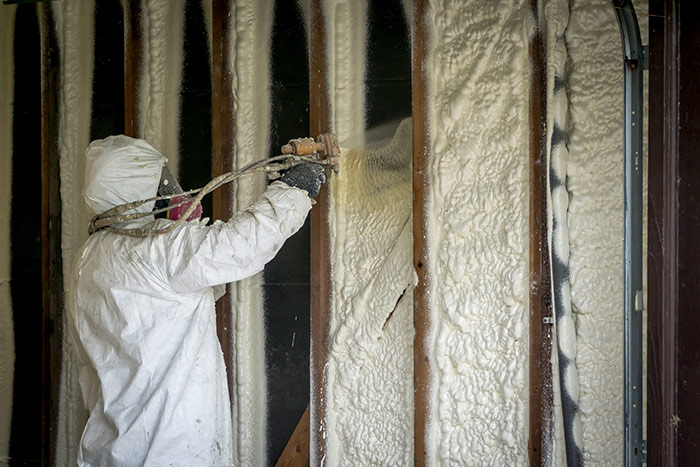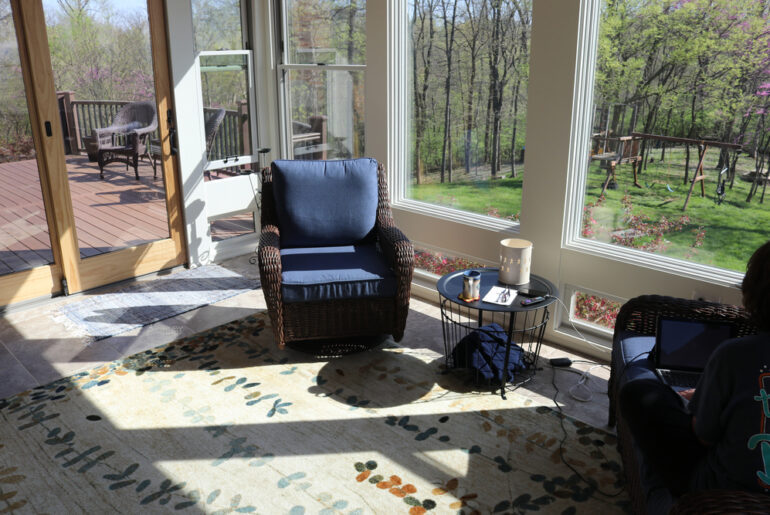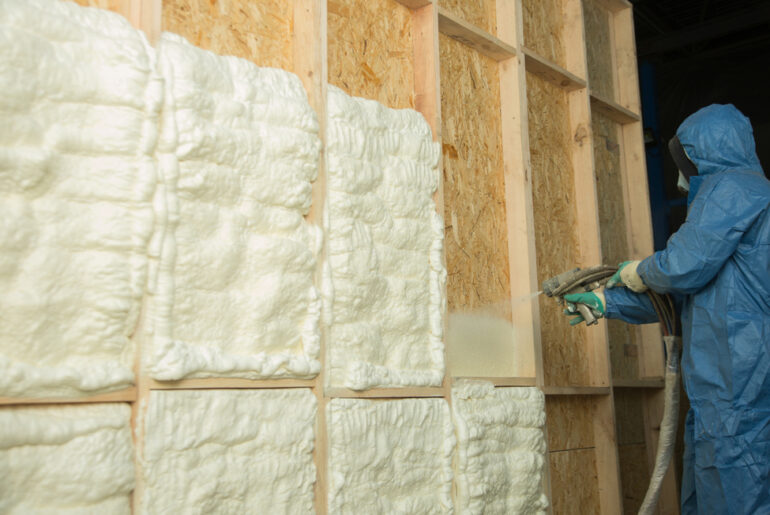You love your sunroom. It is the ideal place to relax, with natural light and a comfortable, dry, warm atmosphere. However, one day, you feel a draft- or worse. There’s water in your sunroom! You need to insulate your sunroom fast.
Spray foam insulation is an effective insulating agent that can keep your sunroom dry and warm without breaking the bank.
What can spray foam do for your sunroom? Are there better options for insulation? What kind of spray foam should you use to insulate your sunroom?
Read on for all these answers and more as you learn how to insulate underneath your sunroom with spray foam!
Can You Use Spray Foam Under Sunroom?
Yes! You can use spray foam to insulate underneath your sunroom. Spray foam is a trusted material for insulation, regardless of location.
Spray foam is also an excellent vapor barrier, preventing liquid water or excess humidity from creeping into your sunroom from the ground below.
Other methods of insulation do not act as vapor barriers to the extent of spray foam, making it an excellent option for keeping your sunroom warm and dry.
Additionally, the thicker layers of spray foam versus the flimsier composition of other insulating materials makes it far sturdier. You could use spray foam anywhere in your sunroom, from underneath it to the ceiling.
What Type Of Spray Foam Should I Use To Insulate Under My Sunroom?
If you have ever seen the spray foam aisle of a hardware store, you know that you have plenty of options when buying spray foam. The number of options can get overwhelming rapidly.
Some spray foams are better for insulating large spaces than others.
In the case of a sunroom, a closed-cell polyurethane spray foam may be your best choice as an insulator and a vapor barrier, as opposed to more polyethylene-based spray foams that may seal moisture inside your sunroom or crawl space.
You may want to use expanding foam, as it allows you to cover a larger area in a shorter expanse of time.
However, cans of expanding foam have less coverage overall. While the may be more thorough, it makes for a more expensive project
How Do You Insulate Under A Sunroom With Spray Foam
Now that you know the safety measures you should take and which varieties of spray foam may be the best for your project, you can proceed with insulating your electrical outlets.
As always, you should utilize the proper protective equipment (also known as PPE) when dealing with spray foam.
The proper protective equipment for insulating underneath your sunroom, especially in a crawlspace, will consist of gloves, protective clothing, a respirator, and protective eyewear.
Ideally, spray foam should be applied in a well-ventilated area. However, this may not be possible in a crawlspace and harmful chemicals may build up in the air, necessitating the use of a respirator.
Step 1. Clean The Area
When insulating an area with spray foam, your first three steps will be preliminary measures to help your project run smoothly.
The first step is cleaning the bottom of your sunroom of any dust and debris. Leftover detritus can prevent spray foam from fully anchoring to a surface and reduce how effective it is as insulation.
You will likely be operating in a crawlspace, so you do not need it to be sparkling clean. Simply ensure that the spray foam insulation can attach itself to the underside of your sunroom.
Step 2. Identify Structural Issues
Unlike similar filler materials, spray foam is an opaque substance. Therefore, it can be hard to see through it once you have applied it.
Inspect your crawlspace and sunroom for any potential structural issues beforehand. If anything seems to be a cause for concern, postpone your insulation and contact a professional immediately.
Step 3. Prepare Your Spray Foam Cans
Spray foam cans are not ready for use right off the bat. Spray foam utilizes pressurized cans, similar to shaving cream or whipped cream.
You must shake these cans for roughly 60 seconds to evenly distribute pressure across the can. An improperly or altogether unshaken can result in a runny and messy spray foam that is challenging to properly apply.
Spray foam cans will come with a dispenser such as a nozzle. You must install these nozzles as directed on the can to ensure proper usage.
These instructions may vary from brand to brand, so there is no universal installation method. Ensure that you properly read your instructions.
Step 4. Apply Spray Foam And Let It Cure
Once you have completed your preliminary measures, you can get to applying the spray foam itself. Apply your PPE as needed and get into position.
Apply the spray foam in a 2-3 inch layer underneath your sunroom for optimal insulation. Be sure to coat the ceiling, and if you deem it necessary, the walls of your crawlspace.
Spray foam may take over an hour to cure. During this time, it is somewhat malleable and still expanding to some degree. Ideally, you should leave the spray foam to cure for up to 24 hours.
After 24 hours have passed, you may cut the insulation as needed. Congratulations! You have insulated your sunroom from below.
Are There Alternatives to Spray Foam?
Thankfully, there are plenty of available solutions if you find that spray foam does not suit your needs for your sunroom.
Any traditional methods of insulation, such as fiberglass insulation, will insulate your sunroom just fine. However, they may not offer the same vapor barrier benefits as spray foam does.
If you want a vapor barrier and an insulating material in one package, spray foam is your way to go.





